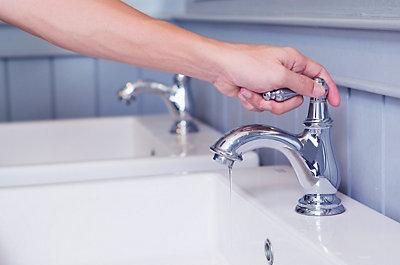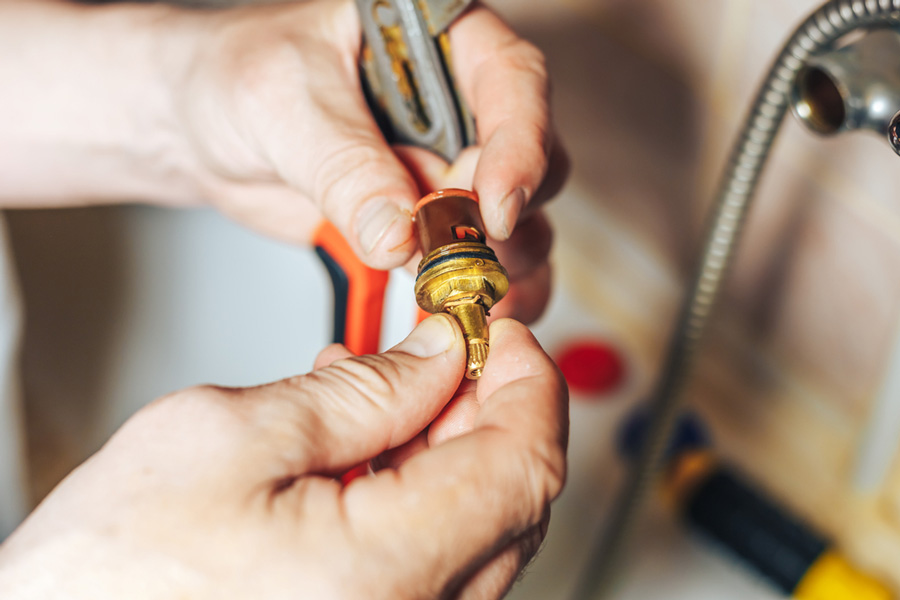Uncovering the Relevance of Fixing a Malfunctioning Faucet
Uncovering the Relevance of Fixing a Malfunctioning Faucet
Blog Article
What are your insights and beliefs about Should I Repair or Replace a Leaky Faucet??

Trickling taps could seem like a minor aggravation, but their impact surpasses just the annoyance of the sound. From wasting water to incurring unnecessary financial prices and health and wellness risks, overlooking a dripping faucet can lead to various repercussions. In this short article, we'll delve into why it's essential to resolve this common house issue promptly and successfully.
Waste of Water
Ecological Effect
Trickling taps add significantly to water wastefulness. According to the Environmental Protection Agency (EPA), a single tap trickling at one drip per second can waste greater than 3,000 gallons of water annually. This not only strains water sources however also affects communities and wild animals depending on them.
Financial Costs
Enhanced Water Costs
Past the ecological effect, leaking faucets can blow up water expenses substantially. The gathered wastefulness gradually translates right into greater energy expenditures, which might have been avoided with timely fixings.
Prospective Building Damage
In addition, prolonged dripping can cause harm to components and surfaces surrounding the tap. Water accumulation can cause discoloration, corrosion, and even structural problems if left neglected, causing additional fixing costs.
Health and wellness Problems
Mold and Mildew Growth
The constant presence of moisture from a dripping faucet creates a suitable setting for mold and mildew growth. These fungi not only jeopardize indoor air top quality however likewise present wellness risks, specifically for people with breathing conditions or allergic reactions.
Waterborne Conditions
Stagnant water in trickling taps can end up being a breeding place for germs and other virus, raising the threat of waterborne conditions. Contaminants such as Legionella germs grow in stagnant water, potentially resulting in serious illnesses when ingested or inhaled.
DIY vs. Expert Repair service
Benefits and drawbacks of Do It Yourself Repair Work
While some may attempt to take care of a trickling tap themselves, DIY repair services include their very own collection of difficulties. Without proper expertise and devices, do it yourself attempts can worsen the concern or bring about incomplete repair work, prolonging the trouble.
Advantages of Hiring an Expert Plumber
Hiring a professional plumber guarantees that the underlying root cause of the leaking faucet is dealt with efficiently. Plumbing technicians have the experience and tools to diagnose and repair faucet problems successfully, saving time and minimizing the danger of more damage.
Step-by-Step Overview to Dealing With a Dripping Tap
Tools Required
Prior to attempting to repair a dripping tap, gather the needed devices, consisting of an adjustable wrench, screwdrivers, replacement components (such as washing machines or cartridges), and plumber's tape.
Typical Faucet Issues and Their Solutions
Recognize the sort of faucet and the details concern creating the drip. Typical problems include damaged washers, corroded valve seats, or defective O-rings. Describe supplier instructions or on the internet tutorials for detailed support on fixings.
Preventive Measures
Regular Maintenance Tips
To prevent trickling faucets, perform regular upkeep such as cleaning aerators, inspecting for leaks, and replacing damaged parts promptly. Additionally, think about setting up water-saving devices or updating to extra reliable components.
Importance of Prompt Fixes
Addressing dripping faucets as quickly as they're noticed avoids further water wastage and possible damage, eventually saving both water and cash in the future.
Influence On Property Worth
Understanding of Well-Maintained Residential Or Commercial Property
Preserving a building in good condition, including dealing with upkeep problems like leaking faucets, improves its perceived worth and value among potential buyers or lessees.
Impact on Resale Value
Residences with well-kept plumbing components, including faucets, command greater resale worths in the realty market. Resolving trickling faucets can contribute to a positive impression during building assessments and settlements.
Ecological Responsibility
Specific Contribution to Conservation
Taking duty for fixing trickling faucets aligns with broader efforts towards water preservation and ecological sustainability. Every person's activities jointly make a substantial impact on protecting priceless resources.
Sustainable Living Practices
By prioritizing timely fixings and adopting water-saving behaviors, people contribute to sustainable living techniques that profit both existing and future generations.
Conclusion
Resolving a dripping faucet surpasses mere convenience; it's an important action toward saving water, reducing financial expenses, and guarding wellness and residential property. Whether via do it yourself repairs or professional assistance, taking action to fix dripping taps is a tiny yet impactful means to advertise accountable stewardship of resources and contribute to a healthier, extra lasting future.
How to Fix a Leaky Faucet: Step-by-Step Repair Guide
A leaky faucet may seem like a simple annoyance, but if it's not fixed promptly, that leak could cost hundreds to potentially thousands. From water damage to mold, mildew, and high water bills, even a tiny leak can be catastrophic if left unattended. Damage like this can even affect the overall value of your home, so it's important to take the right approach for leaky faucet repair. You may need the help of a plumber in some cases, but we've got a few tips you can try on how to fix a leaky faucet before calling the pros.
Four Faucet Types
When you're learning how to fix a leaky faucet, the first step is knowing what kind of faucet you're working with! There are four common types.
Cartridge Faucets
Cartridge faucets come in one- or two-handled varieties. In one-handled cartridge faucets, hot and cold water combines in a single cartridge. In the two-handled versions, hot and cold water are controlled separately and mixed in the faucet.
Ball Faucets
Ball faucets have a single lever you push up and down to adjust the pressure and rotate to change the temperature. A slotted metal ball controls the amount of water allowed into the spout.
Compression Washer Faucets
They're the oldest type of faucet, but they're still used in many homes — especially older ones. Compression faucets have two separate handles that, when turned, raise or lower the washer that seals a water valve. This valve stops water from flowing through the faucet when it is turned off.
Disc Faucets
Disc faucets rarely need to be repaired due to their maintenance-free design. The water flow is controlled by two discs — the upper one raises and lowers against a fixed lower disc, creating a watertight seal. If your disc faucet starts leaking, you may need to replace the seals or clean residue buildup from the inlets.
Fixing a Leaky Faucet
Step 1: Turn Off the Water
Whether you're learning how to fix a leaky bathtub faucet or how to fix a leaky kitchen faucet, always turn off the water supply to your working area when you're fixing a leak. The last thing you want is a flood added to your list of things to fix.
Look for the shutoff valves below your sink or around the tub and turn them clockwise to stop the water flow. If your faucet doesn't have shutoff valves, you may need to turn off the water for the whole house. Check to make sure it's off by turning the faucet on. If nothing comes out, you're ready to start the repair.
Step 2: Take Apart the Faucet
How you disassemble your faucet depends on the type of fixture you have. You can use a flathead screwdriver to remove the caps on top of the handle or handles for cartridge and compression faucets. Inside, you should see handle screws. Unscrew these with a screwdriver to remove the handle.
Disc- and ball-style faucets will typically have an inlet screw near the handle, and removing that will reveal the interior of the faucet.
Detach the Valve Stem
For cartridge- and compression-style faucets, you'll see the inner valve stem or cartridge once you remove the faucet handles. If you have a compression faucet, unscrew the brass valve stem. If you have a cartridge faucet, pull out the cartridge. If your cartridge has been in place for a while, it may require some tools or extra force to remove it due to mineral deposits.
Examine and Replace Parts
Once you've removed the parts, check them out to confirm what needs to be replaced. You may see corroded rubber washers, O-rings, stems, or cartridges. On a ball-style faucet, check the seats and springs for damage.
If you need to repair a leaky disc faucet, check the inlet and seals on the lower disc.
Once you determine what parts must be replaced, visit your local hardware store. Bring the damaged parts with you to ensure you can purchase the correct components to replace them.
Clean Valves and Faucet Cavity
If you've removed a stem or cartridge, you may notice mineral buildup in the faucet's threads. Use white vinegar to clean the valve seat by soaking it for a few minutes, then scrub it away with a soft toothbrush and rinse with warm water. You can also clean the interior of the faucet in the same way.
Reassemble the Faucet
Once your faucet is cleaned and the required parts have been replaced, it's time to reassemble it. Put the pieces back together and slowly turn the water supply back on. Doing this slowly is crucial because too much initial water pressure can damage the new hardware you've just installed.
https://homewarranty.firstam.com/blog/how-to-fix-leaky-faucet

As a passionate reader about What Causes Leaky Faucets & How To Fix Them, I assumed sharing that piece of content was smart. Loved our posting? Please share it. Let another person find it. Thanks for your time. Kindly come by our website back soon.
Report this page